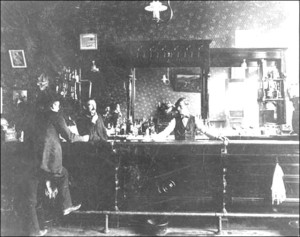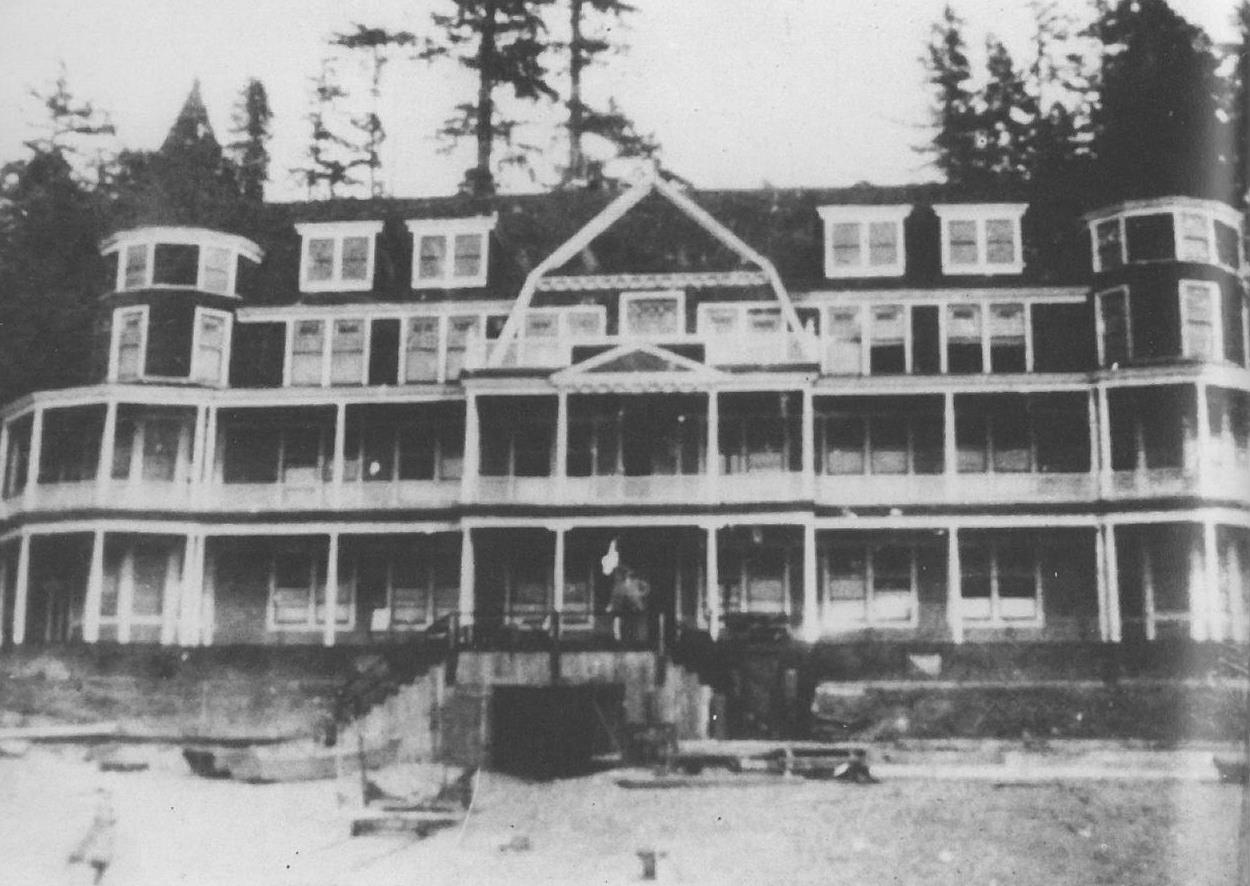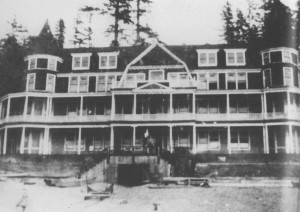Staying a night at the Sunset Beach Hotel
There have always been references to the famed Puget Sound Mosquito Fleet that I’ve run across while researching Washington State history. The entrepreneurial spirit that gave birth to the fleet in the 1850s is part of what makes Washington such a fascinating place. From the 1850s through the 1920s, it was said there were so many steam ships racing around the Sound that it looked like a swarm of mosquitos. And among the most popular stopovers in the 1890s was the Sunset Beach Hotel, known as much for its grandeur as it was for its guest services.

Steamer “Greyhound”
If I were a sailor on the Alida, the North Pacific, the Greyhound, or any one of the 2,500 individual steamers that were part of the Mosquito Fleet, I’d no doubt have spent a night or two on Sunset Beach in what is now University Place. After countless stops at every tiny burgeoning community from sunup until sundown, shuttling travelers from one place to another, I’d be exhausted, sore and probably a bit crabby. So when I knew the route I was on today would dock for the night near Sunset Beach, a sense of relief might have settled in that made the last run of the day a bit more enjoyable.
Approaching Sunset Beach from the water wouldn’t really be all that different from any other spot in Puget Sound. Sure, once the boat was tied off and the crew dismissed for the night, you could stand on the shore and watch an absolutely breathtaking sunset. If you had the time and the desire, the setting sun would slip gently between Fox and McNeil Islands before disappearing behind the Olympic Mountains.
But soon the air would become chilly and uncomfortable, as it often does for those who spend entire days with wind whipping across the skin as the steamers quickly ploughed through the waves. It would be time to retire to the comforts of the lavishly-decorated, four-story lodge built on a hill overlooking Puget Sound. After climbing a steep flight of stairs from the beach to the resort’s back doors, entering the warmth of the main hall would have signaled to my brain that a deep, comfortable sleep would soon be taking hold.
However – being a nineteenth-century sailor – I probably would have been quickly distracted by the sounds of laughter and gaiety spilling out of the hotel’s saloon. Weekend revelers from Seattle, Tacoma and Olympia must have been imbibing their spirits for several hours by the time I strolled into the parlor, and I’d immediately feel underdressed. Piano music and cigar and cigarette smoke would fill my senses as I self-consciously approached the bar for a nightcap.

Interior of the Egan-McGrath saloon, which was in the Grand Central hotel at the foot of Metcalf street in Woolley, WA, in the 1890s. The Sunset Beach Hotel saloon likely looked very similar.
Turning around and sipping the beverage, I’d have been witness to dozens of hotel guests talking, playing cards and making arrangements for the next day’s activities. The hotel’s owner, a man named John Baker, has taken a great deal of time and effort to ensure these folks had a good time so as to warrant their return. They could have ridden horses along the beach or around the nearly eight-acre property. They could go swimming, boating, hiking, or even clamming if the season was right. Evidently there were other “activities” being discussed as well, as more than one of the men in the room discreetly retired upstairs with a lovely lady he had just met on his arm.
Finishing my drink, paying my tab and thanking the bartender I’d finally head to my ground-floor room, secretly hoping the gentlemen with the lady who had just left weren’t boarding in the room just above mine. But it wouldn’t matter. Still exhausted and now, with my head swimming from the drink, it would have been all I could do to get my clothes off before collapsing into the bed, asleep before my head hit the down pillow.
Waking up early, as a sailor always does, I would have quickly gathered my things and made my way down to the boat. Several of the other crewmen would come stumbling down the steep stairs leading to the shoreline after me, looking like they had had more than a few drinks before calling it quits the night before. As the mosquito fleet ship steamed away from Sunset Beach, I’d look back and marvel again at the hotel’s impressive exterior above the water as it slowly shrank from sight.
I’d be looking forward to the next time I ended up on a run that docked at Sunset Beach for the night. But that night would never come. After the hotel burned to the ground in 1904, John Baker sold his property and it was never rebuilt. In fact, the once-princely Sunset Beach Hotel would remain a blackened pile of rubble for another thirty years before the property was platted and sold as residential plots.
There are some remnants of the grand hotel at the site still to this day, but only a select few people know how to find them. One of those people may or may not be Arne Handeland, a 41-year Curtis High School history teacher and descendant of one of the first families to settle in University Place. He’s also the author of “Images of America: University Place,” one of the many wonderful local history books by Arcadia Publishing. It’s available at Arcadia’s website for $21.99 or from the University Place Historical Society.



We live on the property where it use to stand. There’s still remnants of old bath tubs and dishes slowly disintegrating.
Thanks!
Great article